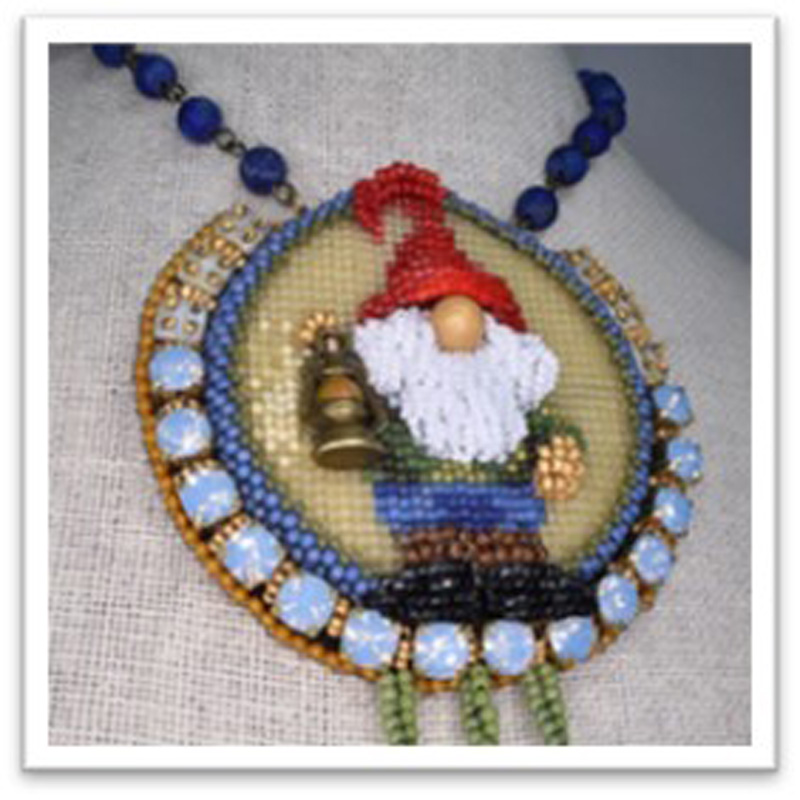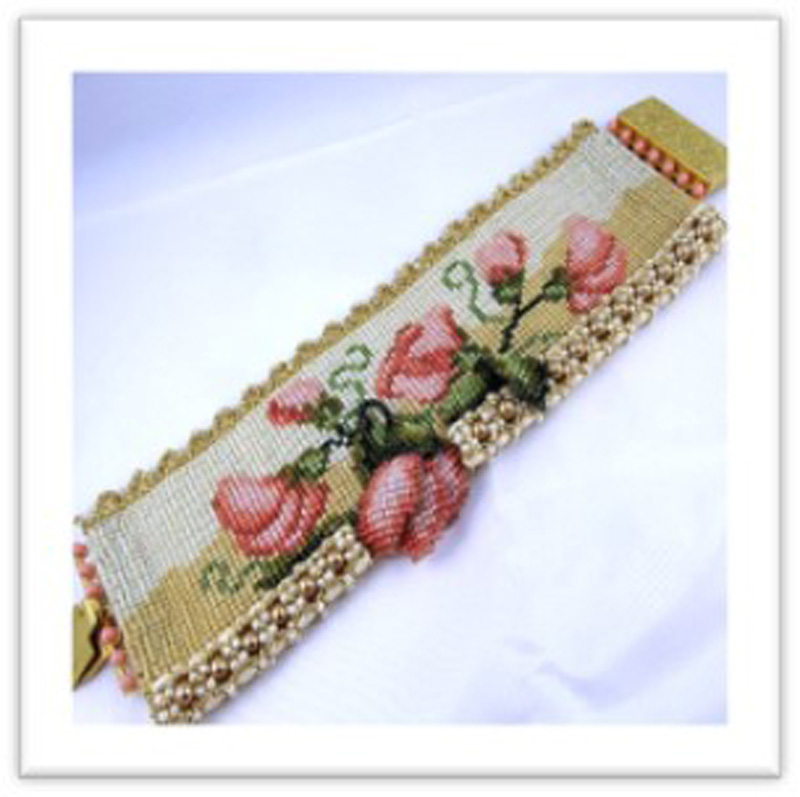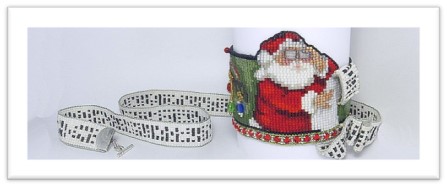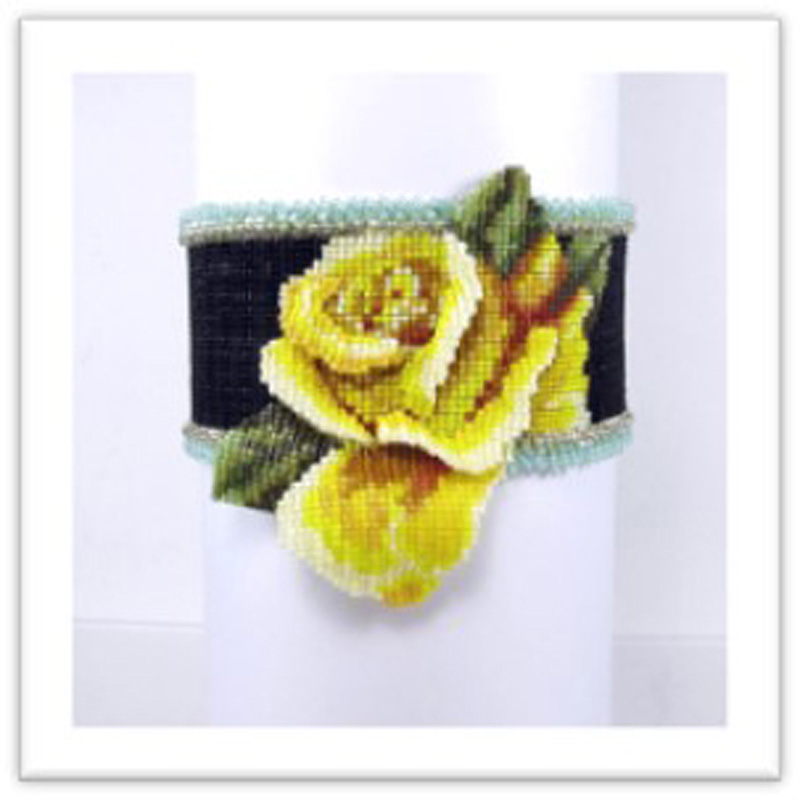Bead Loom Tips
I’ve been putting together a section about Bead Loom Weaving. Now, this isn’t my forte, so I called in a couple of experts. And I’m super-excited to share these amazing bead loom tips from one of the world’s leading bead loom weavers.
Basically, back in 2019, I asked you what bead loom questions you had. Then, I put them to bead loom weaving master, Erin Simonetti. She has been incredibly generous in sharing her bead loom tips and techniques. So, if this is an area of interest for you, the following is absolute gold dust…!
How to use these bead loom tips
I haven’t created any specific order for these questions. So, have a browse through and see if they cover some bead loom tips that you’re looking for.
You will see each question in bold, then Erin’s answer beneath it. They cover quite a range, but there are loads of useful bead loom tips in there. Some you might already be needing, some might come in handy for the future. So, you might want to bookmark this page to return to later on.
I have also included a selection of Erin’s beautiful projects to brighten up this blog and inspire you. The images don’t relate to the photos, but they are fabulous ‘eye candy’!

Do you have written instructions or a video for warping the loom?
Warping instructions are included, with the purchase of my looms and I demonstrate warping in classes, again, using my loom, the E-Loom. There are many different looms, on the market. Let me offer some bead loom tips, that may relate to the loom you own:
- It is best to have a warp tension controller, on your bead loom. This allows for perfect warps and for other creative wefting techniques.
- After tying a knot, on the first warp, be sure to pull the thread, getting the ‘slip’ out of the knot.
- Warp across the loom table, with consistent tension. Do no try to make the warps very taut, while warping, but keeping an even light tension.
- Tie off the last warp, after wrapping around the nail a few times so the tension does not slip while making the knot.
- Turn the Tension controller to tighten all of the warps at the same time.
What beading pattern design software/tool do you recommend?
Many, not all but most, Bead Pattern Programs offered commercially, actually were created for Ceramic Tile Designing. Color placement and configurations are the same. So, it was an easy idea to introduce these programs to the beading world.
BeadTool4, is surely the most affordable and easiest to use. Others are programmed for commercial use and selling.
None of the programs offer perfect bead color selections. Therefore, these must be configured in your program.
Also, perspective adjustments are necessary for the beads and thread thickness, to create a proper rendition. I have touched on these points, in a blog post back in 2010. Here is the LINK to my post, concerning Bead Colors and how to change them.
Finally, the type of image you care to download for transferring, also can make a difference in the number of beads the program selects.
What is the order of your work…….complete the weaving, weave warp threads in (before/after trim), trim work (done on or off the loom, before or after clasp is put on)?
I like to suggest allowing the loom to hold your work, while weaving, trimming, accenting, etc. Calculate the clasp splay first, so you know how long to weave, to fit your wrist.
My personal method of warp management allows the cuff to be removed from the loom, (after all just mentioned is completed), and is on your wrist in 15 minutes. That being said, yes, I do much of the warp management while my weaving is still on the loom, too.

What is the best method for attaching a clasp to a bead loom bracelet?
My biggest suggestion is to be sure all threads are hidden. There are many ways to attach many different styles of clasps. If your attachment includes thread being seen, include smaller or larger beads to plug holds or hide stretches of thread. As for “best”? It depends on the style of clasp being attached. There is appx. 5 Jewellery acceptable means of clasp attachments.
I made a bunch of little flags (13 rows) that only have about 2 to 4-inch warp threads sticking out. Before I just tear them apart, is there a bead loom tip you can suggest to finish them? I tried tweezers to tie them, glue to hold them, etc to no avail. Thank you.
If you are backing the little flags, then consider weaving up and down each short cut warp, brush with an adhesive, then fold that over behind the flag. This is just one way to finalize warps to prepare for a backing.
If you aren’t backing the flags, then try using a short needle to ©W.O.W. (Warp Over Warp). This is a means of threading each warp on a needle, folding it over the same warp inline, and over the first weft. Then continue following the same warp through the weaving and picking up the weft of each row woven. Do this on the back only, as the double warp threads will be seen.

Can you buy a loom which is wider than 80 threads?
There are looms on the market to handle 80 threads or more. Many are custom made, however, may also be missing a warp tension controller.
It is possible to join two panels, vertically. Here is a LINK to my Blog Post, instructing how to do this. It will share how the pattern itself, has to be taken into consideration.
How can you incorporate leather onto the outer sides of a loom woven piece?
Depending on the thickness of the leather, it may be necessary to use an awl to pierce the leather, where the needle should be inserted, for each stitch. Using double faced tape, helps to hold the weaving on to the leather, while it is being handled.
Do you use the same thread for warp and weft? With Nymo D, I sometimes find it hard to get the two passes through smaller beads.
Many of my creations are completed using 5 different types and weights of thread, in the same piece.
- Warp: The warp should be a non-stretchy thread. Because the warps are taut, the stretch of the thread will cause the weave to buckle, when removed from the loom. Select a thread color that blends in well with the beads woven to create the pattern.
- Weft: Always, always, always, use a white weft thread, (unless you are weaving strictly dark opaque beads). This helps the bead color to ‘pop’. Nymo is a stretchy thread and can be used well, for the weft because the weft is not held taut. The weft only holds the beads into place, between each warp. The weight of your weft, will determine the body of your weave, when completed. If you find the weight is more than the size of a bead can handle, use a thinner thread, but try to snap the thread in half, with your hands first, to test the strength of the thinner thread.
- Edges: I tend to use a thicker weight thread, for my edging. The edge gets the most use, on a cuff, for instance. Also, most edges are woven with crystals and sharp hole beads. A thicker thread, will hold up better for the edges. Another good suggestion is to double up the outer warp, or warp with a thicker thread. This way, when attaching an edge design, the outer will also hold up to crystals and sharp hole beads.
- Adding 3D accents: I consider my weft threads when I know I’ll be including 3D accents. The thinner thread will allow for multiple passes to attach the accents.
When you decrease, do you draw in your warp threads? Or do you weave each warp thread into the piece? Are there instances when you do draw in and others when you do not draw in? Please explain the difference. Thank you
Before I begin warping, for a new project, I consider how the shape and finishing aspect of the warps will end up.
If I am decreasing, then I would consider a “weighted warp”. This method of attaching weights to each warp, allows the warps to moveable, while keeping good warp tension. This way, the rows can be indented or woven longer. You can even create voided space, within a section of weaving. I always think about how NOT to weave in any warps thread, to finalize.
Another LINK offers my insights to weighted warps.

When you weave in your weft threads – What procedure do you recommend. I have seen three different styles and they all make sense.
Now, I think you are asking about “Weaving in Warp” threads? I try to never find a need for weaving in warp threads.
However, there are particular design concepts that work best, when warps are woven in one-by-one. One example would be when a cuff is being finalized using a button and button hole. A clean straight edge of bead weaving is necessary. Therefore, I would finalize or manage the warps by using the ©W.O.W. method (explained in an earlier paragraph above).
Shy away from ever weaving warp threads back through rows of woven beads. The beads easily break and the ending of the weaves tends to ‘fan’ or ‘bulk’ out, from the thickness of additional threads through the rows.
©Waning Warps is another means of managing warps to a simple straight woven edge of beads. However, waning is not suggested for long sections of weave, like cuffs. There is a warp management method I use most often and is demonstrated in my classes.
Where to go next…
If you would like to support Erin and find out more about her work, please also read this interview she did. It includes links to her Etsy store and her fabulous blog, which is full of even more bead loom tips.
If you found this helpful and want more beading advice, be sure to join the ‘Better Beader’ mailing list that I run. You get a beading pattern coupon, a free 10 page PDF guide to improving your beading when you join. Then, a monthly newsletter packed full of great blogs covering all aspects of beading and selling your work. Click here to join today.











I am signing up but I can’t seem to find anything on increasing 2 beads on a loom. Is it 1 at a time. Confused???? Please help if you can. Also this was very informative. Thank you.
Thank you Shelly. I’m afraid I am not a bead loom weaver, myself. That is why I asked Caroline to write these blog posts. Your best option would be to contact her. Or to get in touch with Erin Simonetti (her biography is on this website) as she is a bead loom weaving master and will certainly know the answer to your question.
I want to start smaller and add width to my loom work, it is not square! I have an idea how to, but is there an article anywhere that would help me out?
I appreciate any help. I did enjoy reading the above on loom beading. I have done a lot, but it is still helpful!
THANK YOU!
Thank you Torrey! I don’t have an article on here, but I would check out Erin Simonetti’s blog for this information. She certainly has tutorials that use this technique, and it is likely that she has a blog post on it somewhere on her site. One of my posts in the bead weaving section gives an interview with Erin, so you can find her blog and website from there.
Thanks very much!